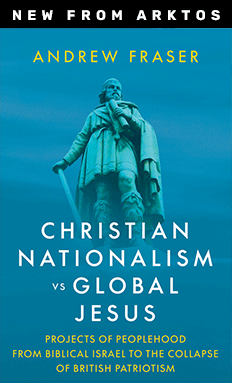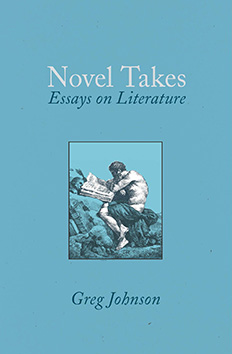The Sombre Enemy of the Pram
Micheal Walker, American Renaissance, July 30, 2017
This morning in my neighborhood I saw four blonde girls whom I think were sisters: They looked alike, there seemed to be a one- to two-year gap between their ages, and they had been shopping for groceries. They were greeted by a fifth girl, also blonde, who was walking a dog. All five then continued in the direction of a nearby where houses sell for around $400,000, the only neighborhood for miles around in which such a group could possibly live. In the city where I live, I have never seen a group of four blond girls — probably siblings — on a public thoroughfare here.
The decline of the white race is widely acknowledged, if not widely publicised. The official media seldom deals with a subject that is by any reckoning of enormous interest and significance. Small circulation publications concerned with white identity have frequently dealt with the demographic decline of the white race, not least among them American Renaissance. Many of the contributions on the subject are accompanied by the results of research, projections and calculations, and I know of no study that claims the white race is other than in rapid decline proportionate to other races and even in some countries in absolute terms.
I have little enthusiasm for tables, charts, graphs, and all forms of statistic projection. So far as the decline of the white population, whether of France, Germany or the United States, I do not need public statistics. I have a pair of eyes. While there have been studies and accounts of the decline of whites, there is little written about which groups of whites have more or fewer children, or what causes the increase or decline of birth rates among different races. Most are of national trends that, for the increasingly multi-racial continents of Europe and North America are misleading. The recorded hike in “French” birth rates in 2015, for example, was in all likelihood the contribution of Muslim immigrants, not indigenous whites.
It strikes me that it is among what I would call the white middle class (white-collar professionals) that child-bearing rates are lowest. The number of children in white families tends to rise at the lower and higher end of the spectrum. Almost nobody I know between the ages of 40 and 60 has more than two children; I know of just three such white families. The majority of white people I know in that age group have no children whatsoever! Most of those who have children — and all who have more than two children — belong to what I would call the upper professional class. Although I do not personally know large white families living on social security, on those rare occasions when I see white families with more than two children, if they are not like the upper class girls I saw this morning, they always belong to a very easily identifiable lower social class. In 30 years of observation, I have not once seen an exception.
Do upper and lower class families have something in common that tends to induce or encourage them to have more children than families of middling incomes? It may be that the upper classes have more money and can afford children and more living space for them, and the lower classes don’t care. There is probably some truth to this, but non-whites in all social groups living in Europe or North America have more children on average than whites. Why?
The white groups that do have more children — and here I would include some religious groups, such as Mormons or the Amish — are always marked by at least one of two circumstances: a fundamentally optimistic world view and membership in a community. Optimism is the natural will to prosper and increase. Deep pessimism — even unconscious — about oneself and the future of one’s kind leads to sterility. (By “kind” I mean not only race, but also such constructs as “the elect,” “Christ’s chosen,” “the clan,” “family,” “our people,” “our neighborhood,” “our brothers and sisters,” “our street,” “our hood,” “our circle,” “comrades.”) The absence of a strong perception that one is born into a circle of “one’s own” leads to misanthropy, withdrawal and sterility. A sense of community is closely associated with optimism. It is not necessarily an intellectual or even personal optimism, but it is the instinctive sense that one belongs to a winning group or community.
Sadly ironical support for this theory comes from the low level of fertility among the very group that professes to be most concerned about white decline, namely, racially conscious whites. The last time I was in England I did a mental check of the seven or eight people I met — mostly between the ages of 30 and 60 — most of them racially conscious and all of them, with one exception, childless! The one exception was the least political or racially conscious.
This will seem less contradictory if I am right in my theory, for white survivalists are mostly pessimistic and without strong community bonds. Racially conscious whites seldom have more than two children, many have only one, and a considerable number — even more I think then whites on average — have none at all. When I ask leaders, writers, and spokesmen for white survival how many children they have, the question seems to surprise them, suggesting that it is a novel one, and the reaction is often negative, sometimes bordering on aggressive.
When I ask childless white activists why they have no children, answers vary: One suggested white activists have the role of soldier ants, which are sterile; another told me that she hated children; another said, “gee ya, it’s terrible,” but did not wish to pursue the point; another asked, “What am I supposed to do? Perhaps I should kill myself;” another said “it takes two to tango.” The latter is 40 years old so it is taking him a long time to find a dancing partner.
I myself have only two children, which I acknowledge to be inadequate. I tend to be pessimistic about the future of my race and I do not live in what I could possibly call a “community of kith and kin.” My own case supports my theory.
White survivalists tend to refer to themselves as part of a movement. When I think of a movement I think of groups of people working towards something or travelling somewhere; I do not think of children, of hearth and home. How do most non-whites describe themselves, and how do the few white groups with higher birth rates describe themselves? Muslims, immigrants, blacks, Hispanics, the Amish — they would not describes themselves as a movement but as a community. Community means families, generations, hearth and home. Even the liberal hippy community — I have no statistics but I’ll bet the cost of a pack of diapers I am right — has more white children on average than members of the “white survival movement.”
There is an extremely vulgar song by an agile young black lady, the theme of which is that if you want more federal aid you have only to produce another child. The song makes an important point. The black community does not, I suspect, spend many hours reading books on the destiny of the black race nor do very many blacks allow financial considerations to thwart reproduction. Instead of worrying and becoming pessimistic, they are doing other things. And thanks to a sort of devil-may-care optimism and sense of community, blacks are having more children than whites. The “white survival movement” worries about the decline of the race and scratches its head and deplores the state of the world. Hispanics and blacks do not have time for so much thinking. It may be that they are less agile in grappling with demographic and racial issues, but they are winning the numbers game.
Maybe whites should be less theoretical about demographic decline. If they are worried about the decline of their race, they should become optimistic, create communities, and have children. White survivalists should disregard other races as much as possible and establish alternative friends, services, and networks. They should build communities; children will follow. Of course having children is extremely time consuming and extremely expensive, and distracts the creative spirit. Cyril Connolly said, “There is no more sombre enemy of good art than the pram in the hall,” but Cyril Connolly managed to write some entertaining books and late in life to produce two children. Besides, most people cannot lay claim to being good artists, but we can all try to be good parents. The sombre enemy of the pram is pessimism and isolation.















